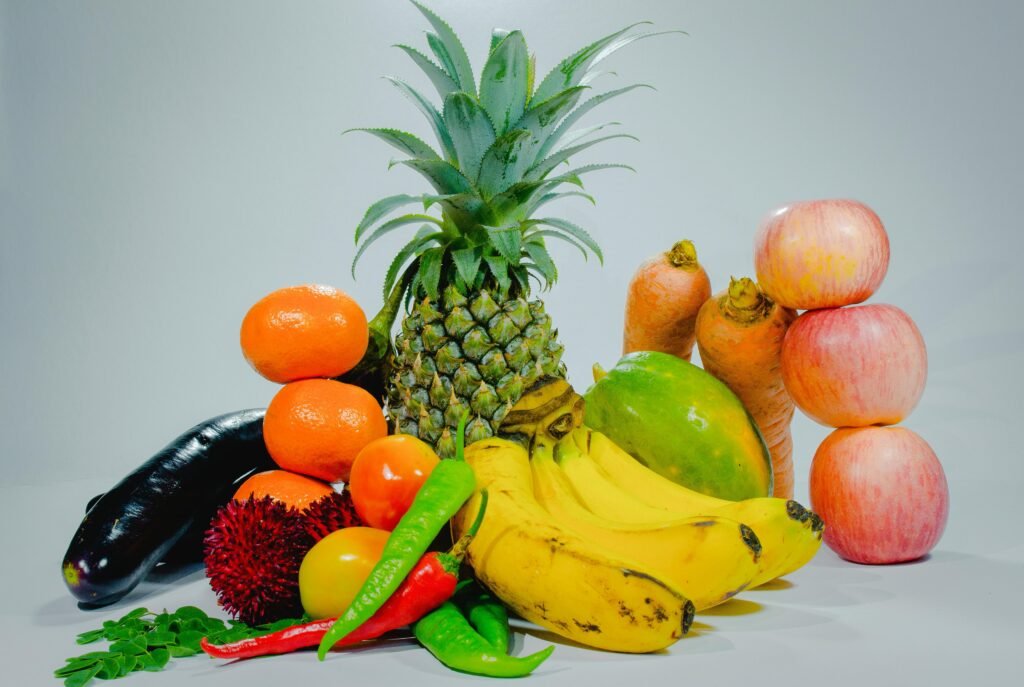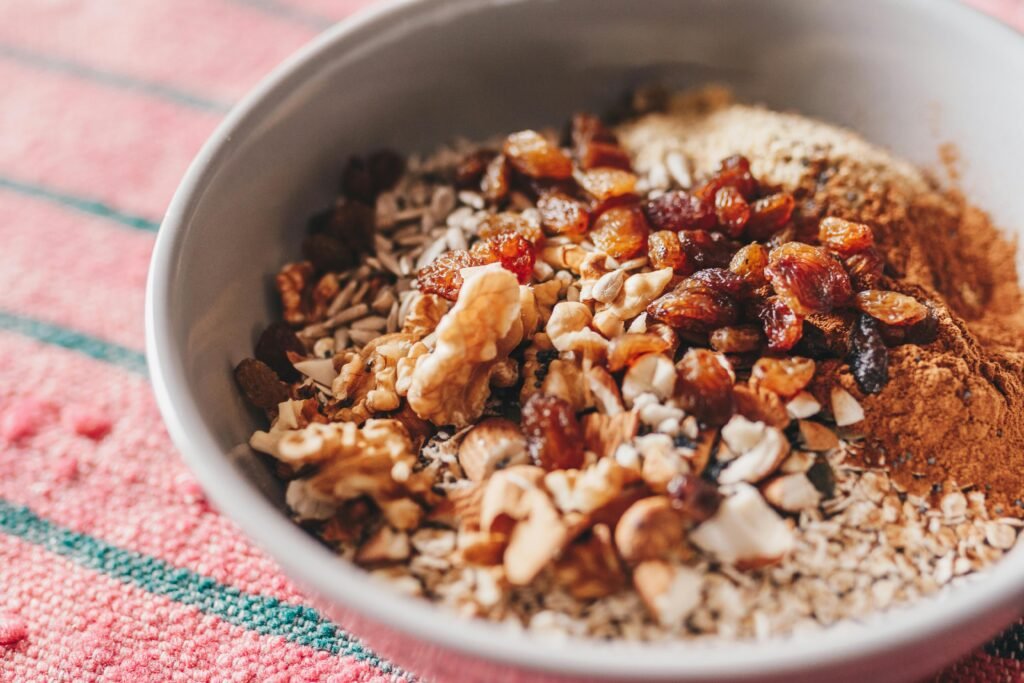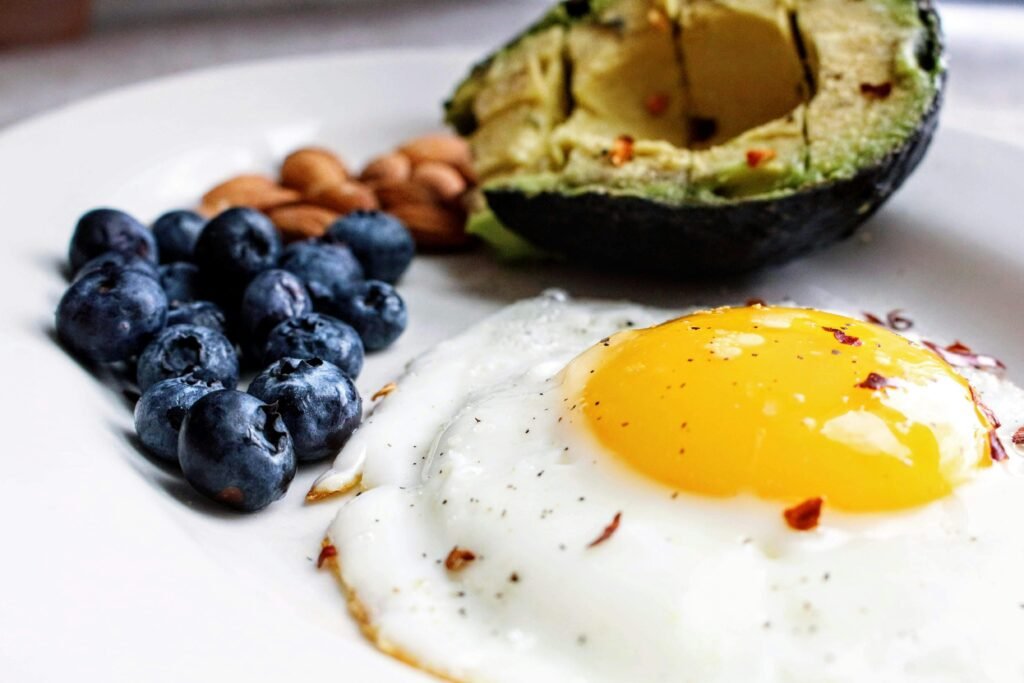
Introduction to Nutritious Eating
In today’s fast-paced world, maintaining a healthy lifestyle can often seem overwhelming.
However, by incorporating some key habits into your daily routine, you and healthy eating can become a harmonious pair.
A balanced diet not only fuels your body but also supports overall well-being, enhancing both physical and mental health.
The food pyramid serves as a helpful guide in understanding the various food groups and how to balance them for optimal nutrition.
By making informed choices and practicing moderation, you can pave the way to a healthier lifestyle.
Adding Fruits and Vegetables to Your Diet

Incorporating fruits and vegetables into your daily meals can have a significant positive impact on your health.
These foods are packed with essential vitamins, minerals, and antioxidants, which can enhance your immune system and improve overall well-being.
A practical way to increase your fruit intake is by adding berries, bananas, or apple slices to your morning cereal or smoothie.
This not only boosts the nutritional value of your breakfast but also adds natural sweetness and flavor.
Snacking on fresh fruit like oranges, grapes, or pears throughout the day can also help you meet your daily fruit intake goals.
Vegetables are equally important and can be easily included in your meals.
Start by incorporating a side salad with your lunch and dinner.
Experiment with different greens, such as spinach, arugula, and kale, and add colorful veggies like tomatoes, cucumbers, and bell peppers for added variety.
Roasting vegetables like carrots, sweet potatoes, and Brussels sprouts can bring out their natural sweetness and make them a delicious addition to any dish.
To further diversify your diet, try incorporating vegetable-based soups, stews, and stir-fries into your meal plan.
These dishes are not only comforting but also offer an easy way to consume multiple servings of vegetables in one meal.
You can also blend vegetables into sauces or smoothies for an extra nutrient boost.
Including fruits and vegetables in every meal is a simple yet effective strategy.
For example, you can add avocado slices to your toast, sprinkle some berries over yogurt, or mix chopped vegetables into your pasta sauce.
The key is to get creative and find enjoyable ways to incorporate these nutritious foods into your diet.
By making fruits and vegetables a staple in your meals, you can take a significant step toward achieving a balanced and healthy eating plan.
The variety of flavors, textures, and colors not only makes your meals more enjoyable but also ensures you receive a wide range of essential nutrients.
Selecting Whole Grains

Whole grains play an important role in a nutritious diet, providing a range of health benefits that refined grains simply cannot match.
They are packed with essential nutrients like fiber, vitamins, and minerals that support overall health.
Whole grains retain all parts of the grain kernel, including the bran, germ, and endosperm, which means they offer more nutrients than their refined counterparts.
Including a variety of whole grains in your meals can make your diet more balanced and wholesome.
Some great examples of whole grains are quinoa, brown rice, oats, barley, and whole wheat products like bread and pasta.
These grains can be easily incorporated into your daily routine with just a few small changes.
For breakfast, consider swapping out refined cereal for a bowl of oatmeal topped with fresh fruit and nuts.
Not only does this add flavor and texture, but it also boosts the nutritional value of your first meal of the day.
If you’re a fan of smoothies, try adding a handful of cooked quinoa or a spoonful of oat bran to give your drink an extra nutrient punch.
At lunch or dinner, make the switch from white rice to brown rice or try a quinoa salad loaded with colorful vegetables.
You can also use whole wheat tortillas for wraps or whole grain bread for sandwiches.
If you’re a pasta lover, opt for whole grain versions of your favorite noodles.
They pair well with a variety of sauces and can make your meals heartier and more filling.
Barley and farro are excellent choices for soups and stews, adding a chewy texture and earthy flavor.
You can even incorporate whole grains into your baking by using whole wheat flour or oat flour in your recipes.
These grains provide a richer taste and add a nutrient boost to your baked goods.
When grocery shopping, look for products labeled as “100% whole grain” or “whole wheat.”
Be cautious of items that simply say “multigrain” or “made with whole grains,” as these might still contain a significant amount of refined grains.
Reading food labels carefully can help you make better choices and ensure you’re getting the full benefits of whole grains in your diet.
Incorporating a variety of whole grains into your meals can help you maintain a balanced and nutritious diet, supporting your overall well-being.
Recognizing Healthy Fats

Healthy fats, such as those found in avocados, nuts, and olive oil, can improve heart health and support brain function.
When cooking, choose oils like olive or canola, which are rich in monounsaturated fats.
These fats can help reduce bad cholesterol levels and lower your risk of heart disease.
Additionally, incorporating fatty fish like salmon, mackerel, and sardines into your meals can provide an excellent source of omega-3 fatty acids.
Omega-3s are essential fats that your body cannot produce on its own and must be obtained from your diet.
They have been shown to reduce inflammation, lower blood pressure, and support heart and brain health.
Nuts and seeds are another great source of healthy fats.
Almonds, walnuts, flaxseeds, and chia seeds can be added to salads, smoothies, or eaten as a snack.
These foods also provide additional nutrients like protein, fiber, and essential vitamins and minerals.
When selecting dairy products, opt for those that are lower in saturated fats, such as low-fat or fat-free yogurt and milk.
These choices can still provide necessary nutrients like calcium and vitamin D without the added unhealthy fats.
Eggs, particularly the yolks, contain healthy fats and are a good source of protein and essential nutrients.
Including eggs in your diet can contribute to a balanced intake of healthy fats, but it’s important to consume them in moderation.
It’s crucial to limit your intake of unhealthy fats, particularly trans fats found in many processed and packaged foods.
These fats can increase your risk of heart disease and other health issues. Instead, focus on consuming foods rich in healthy fats, which can provide energy, improve nutrient absorption, and support overall health.
Balancing Your Protein Consumption

Balancing your protein intake is vital for maintaining muscle mass, supporting metabolic functions, and providing the energy your body needs to perform daily tasks.
Diversifying your sources of protein ensures you get a broad spectrum of nutrients while also making your meals more interesting and satisfying.
Animal-based proteins, such as lean meats, poultry, fish, eggs, and dairy products, are rich in essential amino acids that your body needs for muscle repair and growth.
Opt for lean cuts of meat like chicken breast, turkey, and lean beef, which offer high protein content with lower levels of unhealthy fats.
Fish, especially fatty fish like salmon, mackerel, and sardines, not only provides protein but also essential omega-3 fatty acids, which benefit heart health.
Incorporating plant-based proteins into your diet can add variety and additional health benefits.
Foods like beans, lentils, chickpeas, and tofu are excellent plant-based protein sources that are also high in fiber, vitamins, and minerals.
Lentils and beans can be easily added to soups, salads, and casseroles, providing a nutrient-dense boost to your meals.
Tofu and tempeh can be marinated and grilled or stir-fried for a flavorful plant-based protein option.
Nuts and seeds, including almonds, walnuts, chia seeds, and flaxseeds, are also great sources of protein.
They can be added to smoothies, salads, or eaten as a snack. These foods also provide healthy fats and other essential nutrients, making them a valuable addition to a balanced diet.
In addition to whole foods, some grains and vegetables also contain protein.
Quinoa, for instance, is a complete protein, meaning it contains all nine essential amino acids.
It can be used as a base for salads, added to soups, or served as a side dish.
Vegetables like spinach, broccoli, and Brussels sprouts also contain small amounts of protein and can contribute to your overall intake when consumed in larger quantities.
When planning your meals, aim to include a variety of protein sources to ensure a balanced intake of amino acids and other essential nutrients.
By diversifying your protein sources, you not only support your overall health but also make your meals more enjoyable and satisfying.
Cutting Down on Processed Foods and Sugars

Processed foods and sugars can have a detrimental impact on health, contributing to weight gain and increasing the risk of various diseases.
One effective strategy to cut down on processed foods and sugars is to prepare meals at home using fresh ingredients.
Cooking at home allows you to control what goes into your food, helping you avoid hidden sugars and unhealthy additives often found in packaged and restaurant foods.
Reading food labels carefully can also help you make better choices.
Look for items with minimal ingredients and avoid products with added sugars or unfamiliar additives.
When it comes to sweetening your meals or beverages, opt for natural sweeteners like honey or maple syrup, but use them sparingly.
These alternatives can provide sweetness without the harmful effects associated with refined sugars.
Additionally, you can explore using fruits to add natural sweetness to your dishes.
For example, mashed bananas or unsweetened applesauce can be excellent substitutes in baking recipes.
Reducing your consumption of sugary beverages, such as sodas and fruit juices, is another crucial step.
These drinks are often loaded with sugar and provide little to no nutritional value.
Instead, try drinking water, herbal teas, or sparkling water with a splash of lemon or lime for flavor.
If you enjoy flavored drinks, consider infusing your water with fresh fruit slices or herbs like mint for a refreshing and healthy alternative.
Snacking on whole foods instead of processed snacks can also make a significant difference.
Choose options like fresh fruits, nuts, and seeds over chips, candy, or cookies.
These whole foods not only satisfy your hunger but also provide essential nutrients and fiber.
Finally, being mindful of portion sizes and frequency of consumption can help you manage your intake of processed foods and sugars.
Treat yourself occasionally but try to keep these indulgences in check.
Keeping Yourself Hydrated

Keeping hydrated is essential for maintaining your body’s functions and overall well-being.
Water is crucial for regulating body temperature, aiding digestion, and transporting nutrients and oxygen to cells.
Dehydration can lead to fatigue, headaches, and impaired concentration, making it important to stay adequately hydrated throughout the day.
One simple yet effective strategy to ensure proper hydration is to carry a reusable water bottle with you at all times.
This serves as a constant reminder to drink water and makes it convenient to take sips regularly.
You can also set reminders on your phone or use hydration tracking apps to help you keep on top of your water intake.
If plain water feels monotonous, try infusing it with natural flavors.
Add slices of citrus fruits like lemon, lime, or orange, or toss in some fresh berries and herbs such as mint or basil.
These additions not only enhance the taste but also provide a refreshing change that can make drinking water more enjoyable.
In addition to water, you can stay hydrated by consuming water-rich foods.
Fruits like watermelon, cucumbers, and strawberries have high water content and can contribute to your daily hydration needs.
Soups and broths are also excellent sources of fluid, especially during colder months.
It’s important to adjust your water intake based on various factors.
For instance, if you’re physically active, you’ll need more water to compensate for the fluids lost through sweat.
Similarly, hot and humid weather increases your body’s need for hydration.
Drinking a glass of water before and after exercise can help maintain your fluid balance.
Alcohol and caffeinated beverages can contribute to dehydration, so it’s wise to moderate your intake of these drinks.
If you do consume them, make an extra effort to drink additional water to offset their diuretic effects.
Signs of proper hydration include clear or light-colored urine and feeling generally alert and energetic.
Pay attention to your body’s signals and respond by drinking water as needed.
By making hydration a priority, you support your body’s functions and contribute to overall health and well-being.
Practicing Mindful Eating

Practicing mindful eating involves engaging all your senses and focusing on the present moment during meals.
This approach encourages a deeper appreciation of your food and fosters a healthier relationship with eating.
By being attentive to your body’s hunger and fullness cues, you can avoid overeating and make more conscious food choices.
Start by creating a calm and distraction-free eating environment.
Turn off the television, put away your smartphone, and sit down at a table.
Take a moment to appreciate the appearance and aroma of your meal before taking your first bite.
Notice the colors, textures, and scents of the food in front of you.
As you begin eating, chew each bite slowly and thoroughly.
Pay attention to the flavors and how the food feels in your mouth.
Savor each mouthful and take the time to fully experience the meal.
This not only enhances your enjoyment but also aids digestion and helps you recognize when you are comfortably full.
Being mindful of portion sizes can also play a significant role in preventing overeating.
Serve yourself smaller portions and take a few moments between bites to assess your hunger levels.
This pause allows your brain to catch up with your stomach and signals when you have had enough to eat.
Additionally, reflecting on the source and preparation of your food can deepen your connection to what you’re eating.
Consider the journey your meal has taken from farm to table, and express gratitude for the effort that went into bringing it to your plate.
Mindful eating is not about perfection but about making gradual changes to become more aware of your eating habits.
Practicing mindfulness regularly can help you identify emotional eating triggers and reduce stress-related eating patterns.
Over time, this practice can lead to a more balanced and satisfying approach to food.
By incorporating mindful eating into your routine, you can enhance your overall eating experience and promote a healthier lifestyle.
This practice not only supports physical health but also contributes to emotional well-being, creating a more harmonious relationship with food.
